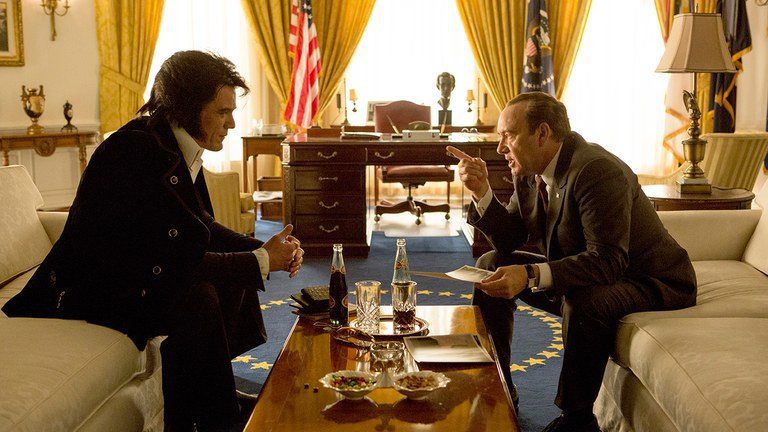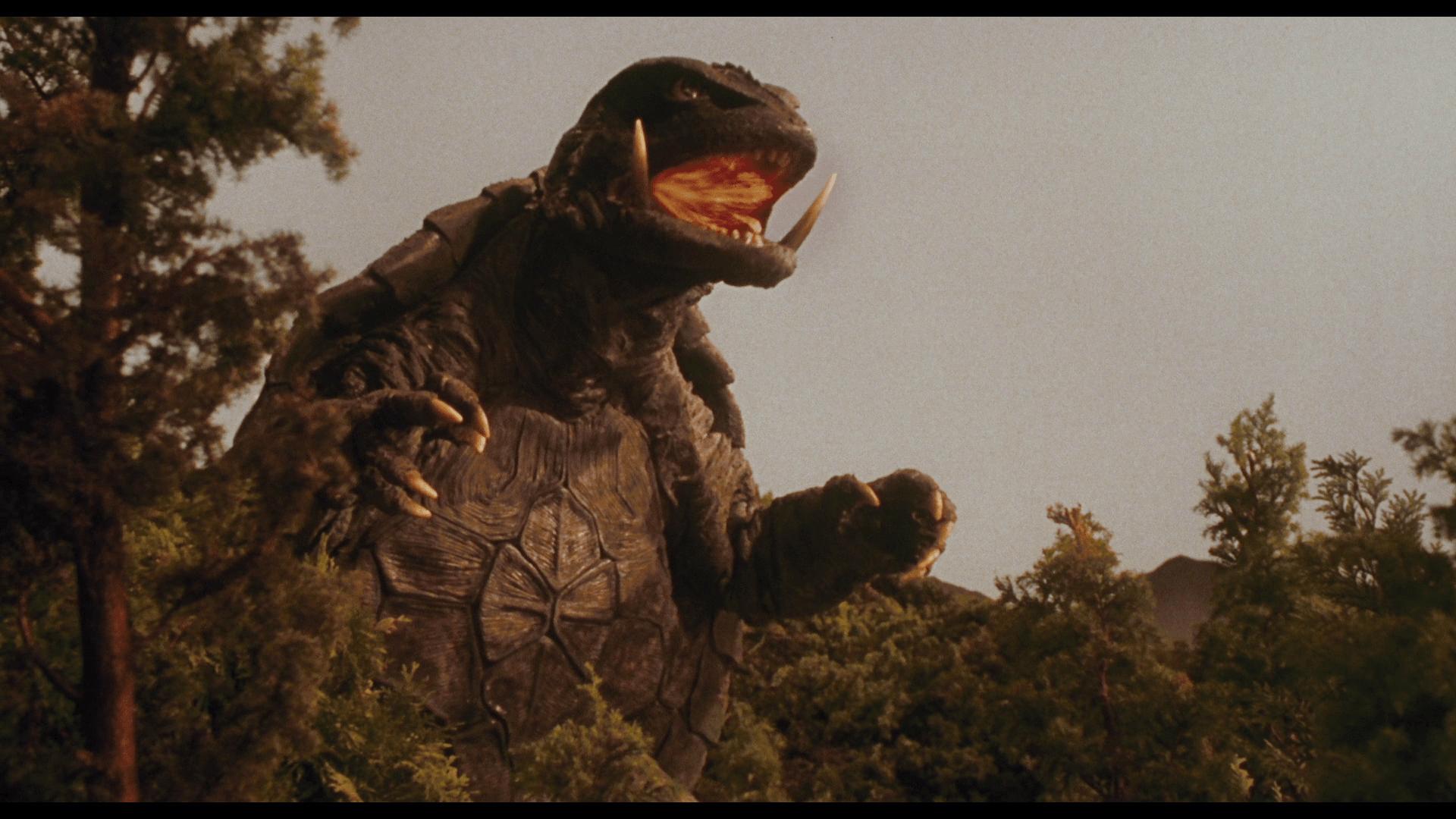
By Ben Dower
When three giant flying bat-like monsters named Gyaos hatch and begin feeding on people on Himegami Island, ornithologist Dr. Mayumi Nagamine (Shinobu Nakayama) and Nagasaki police inspector Tsutomu Osako (Yukijiro Hotaru) hatch a plan to trap them in Fukuoka Dome.
Meanwhile, a mysterious floating atoll is found in the Pacific Ocean. A research team, including Naoya Kusanagi (Akira Onedera) and Yoshinari Yonemori (Tsuyoshi Ohara), head to the atoll and find the surface is dotted with magatama. The atoll is soon discovered to contain the giant monster Gamera, and it is heading toward Fukuoka.
Gamera surfaces in Fukuoka Harbour just as the operation to trap the Gyaos is wrapping up. Gamera kills one of the Gyaos as it flees the Fukuoka Dome, but the other two manage to escape. To the surprise of Dr. Nagamine and Mr. Yonemori, Gamera also takes flight to pursue the Gyaos.
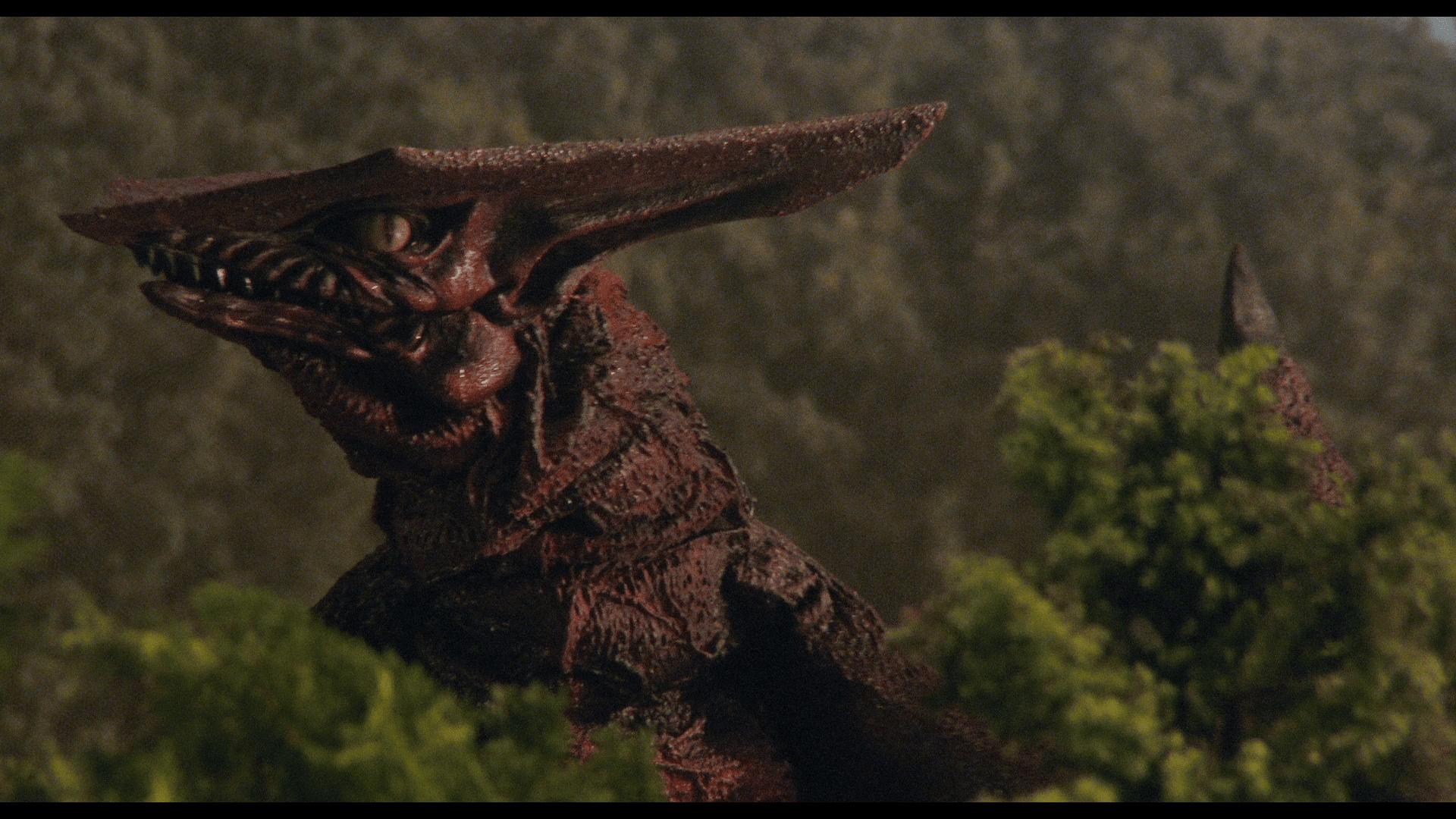
Mr. Yonemori gives one of the magatama to Naoya Kusanagi?s daughter, Asagi (Ayako Fujitani). She soon finds the magatama has linked her to the monster, to the point where she can read his thoughts and his injuries show up on her body.
Meanwhile, Dr. Nagamine discovers the Gyaos can reproduce asexually and very quickly. With the fate of humanity hanging in the balance, it is up to Gamera, with the help of Asagi, to kill the Gyaos before their numbers get out of control.
Seeing Toho?s success with giant monster pictures in the late 1950s and early 1960s, Daiei Film decided to create their own giant monster movie. Their first attempt came in 1964 with Giant Horde Beast Nezura, a film about giant rats. Real rats were brought in for the film, and things just went down hill from there. The production was eventually shut down and the film never completed.
Though Giant Horde Beast Nezura was not to be, Daiei Film wasn?t ready to give up on the genre just yet. In 1965 they released Gamera, the Giant Monster, about a giant flying fire-breathing turtle thawed out by a nuclear explosion in the Arctic that ends up going on a rampage through Tokyo. The movie was a success, and sequels soon followed. By the third film, the Gamera series had shifted to targeting children as its primary audience, with Gamera acting as a giant monster hero battling off dangerous monsters. Tight budgets and juvenile plotlines became the norm as the series continued into the early 1970s until Gamera vs. Zigra (1971), after which Daiei went bankrupt in 1971. As Daiei Film was trying to rebuild itself, the studio released Super Monster Gamera (1980), but it wasn?t much of a resurrection for the giant turtle.
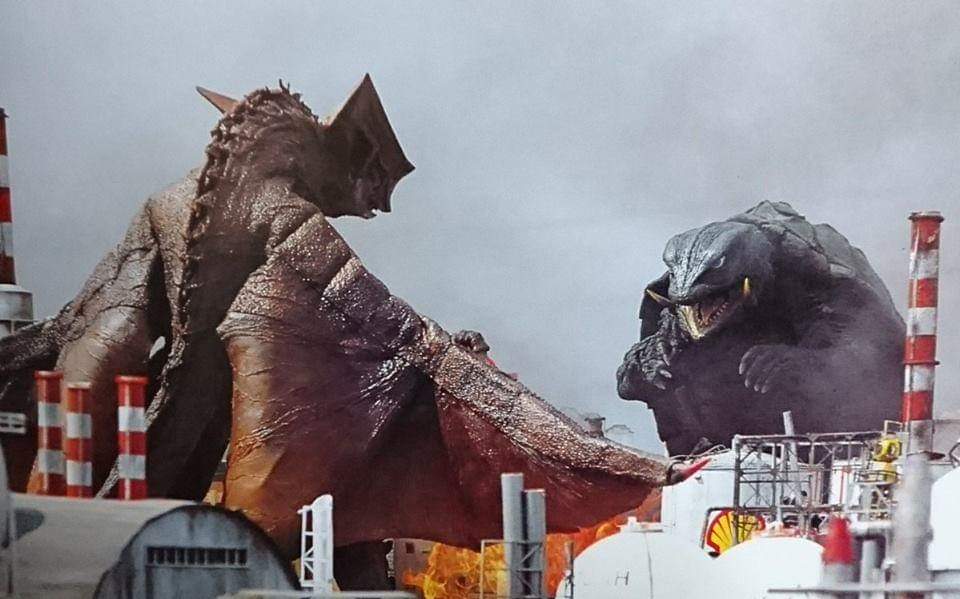
In the 1990s, Toho was seeing success with the Heisei Godzilla series. Now that Daiei Film was in much better shape, the studio decided to revive Gamera once again, hiring Shusuke Kaneko to direct the new movie. Kaneko had got his start at Nikkatsu in the 1970s, working on several of their Roman Porno films. In the late 1980s, as Nikkatsu headed toward bankruptcy, Kaneko left Nikkatsu to work with other studios, at one point even asking Producer Shogo Tomiyama if he could direct Godzilla vs. Mothra (1992).
Screenwriter Kazunori Ito was hired to write the new Gamera movie. Ito is perhaps best known in the West for writing the anime film Ghost in the Shell (1995). For Gamera: Guardian of the Universe, Ito completely reinvents both Gamera and Gyaos for a new generation. The story is tight and coherant, sticking to genre conventions just enough to keep things feeling familiar for fans while also putting an original spin on old cliches.
To handle the special effects, Shinji Higuchi was brought onboard the production. Higuchi had previously worked on The Return of Godzilla (1984) and Mikadroid: Robokill Beneath Discoclub Layla (1991), as well as been involved in several anime productions. His special effects work for Gamera: Guardian of the Universe is incredible, and he would improve his craft with each successive entry in the Heisei Gamera trilogy.
The film has a large cast, but there are two that really stand out. The first is Yukijiro Hotaro, who plays Nagasaki police inspector Tsutomu Osako. Hotaro is a prolific actor who got his start in the early 1980s in the pink film industry. He is a very familiar face for fans of Japanese special effects productions, having been in many such films and shows over the last few decades. Hotaru would return in both sequels to Gamera: Guardian of the Universe, as well as the fan-made Gamera 4: Truth (2003).
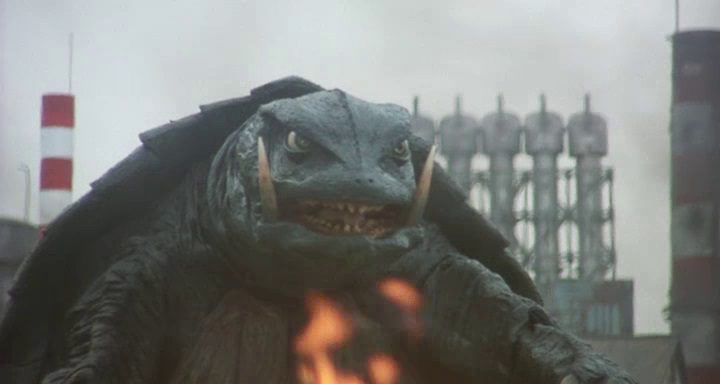
The second major star of the film is Ayako Fujitani in the role of Asagi Kusanagi. Fujitani is the real-life daughter of actor Steven Seagal, and Gamera: Guardian of the Universe is her first acting role. Like Hotaru, Fujitani would return for the following two Gamera films and Kaneko?s Cross Fire (2000), as well as star in Hideaki Anno?s Ritual (2000), which was based on a novella she wrote.
Gamera: Guardian of the Universe is an incredible rebirth for Gamera, a monster that was largely regarded as a child-oriented, inferior knock-off of Godzilla. The film manages to take the rather silly concept of a heroic fire-breathing flying turtle and make the viewers totally buy into it. Gamera: Guardian of the Universe easily tops every Heisei Godzilla series film, and is one of the best Japanese giant monster movies ever made. As the Heisei Gamera trilogy continued into the late 1990s, each successive film got better and better.
Gamera: Guardian of the Universe is currently available on Blu-ray from Arrow Video in the box-set titled Gamera: The Heisei Era. It contains the Japanese version, American English dub, and the British English dub, which also weaves techno music throughout the film, creating a really wild viewing experience.



